Western accusations of 'forced labor' in Xinjiang disproved by high degree of mechanization, seed advances
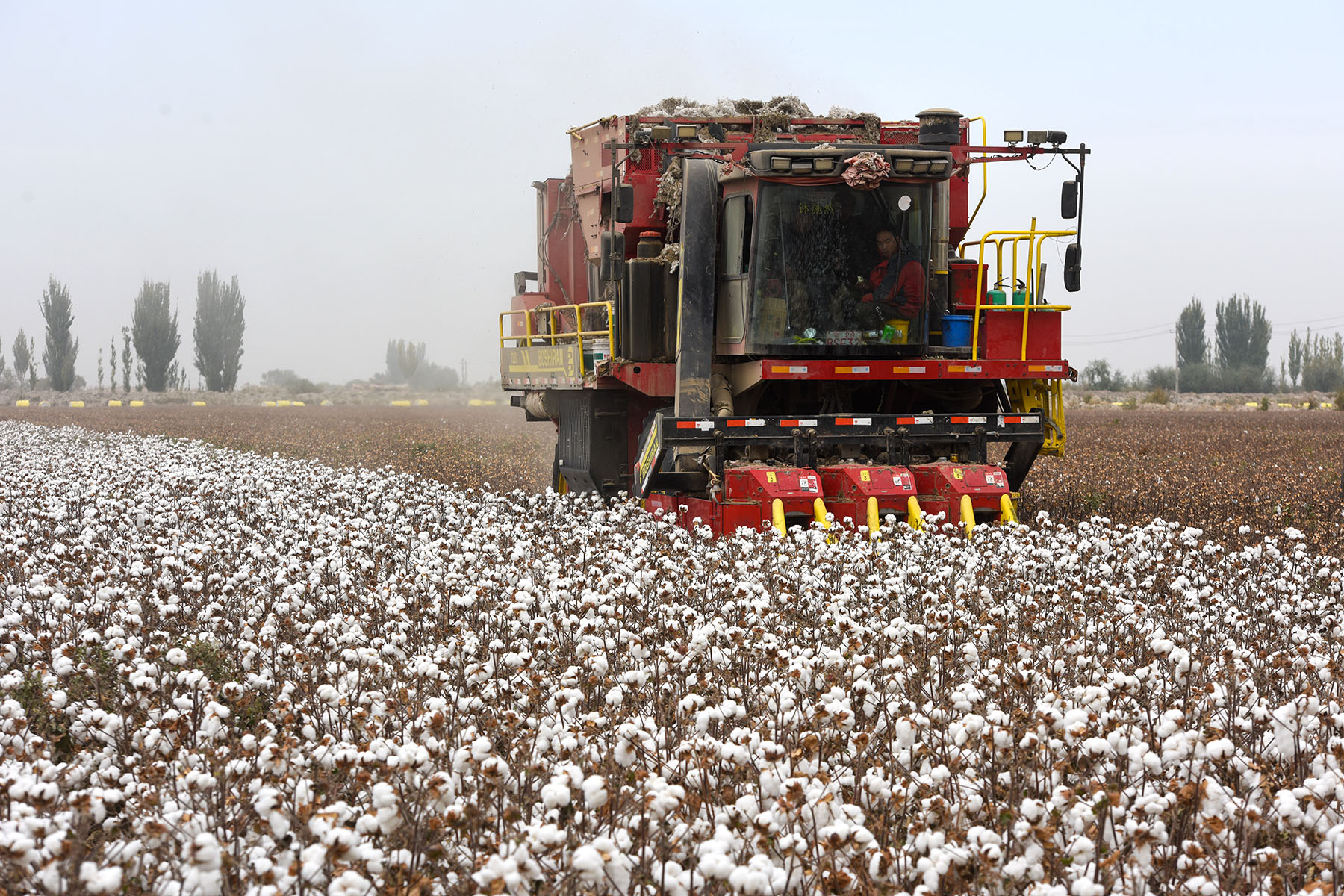
Li Fugang, a cotton farmer in Awat county, Xinjiang Uygur autonomous region, is looking forward to harvesting the crop he planted in April in about a month.
He owns a 26.67-hectare plot in the county — renowned as the homeland of long-staple cotton — in southern Xinjiang's Aksu prefecture.
"It's going to be another bumper cotton harvest this year," the 50-year-old said. "Besides continuing to push for cotton yields, cotton farmers are more competitive in producing premium cotton as, since last year, we can receive extra incentives for producing premium cotton."
READ MORE: Xinjiang kicks off cotton planting season with undeterred momentum
The production of premium cotton will further enhance Xinjiang cotton's irreplaceable role in domestic and global textile markets, he added.
"Compared with cotton from top cotton-producing countries such as the United States and India, I am proud to say that China's cotton, especially that produced in Xinjiang, is the best in the world," Li said.
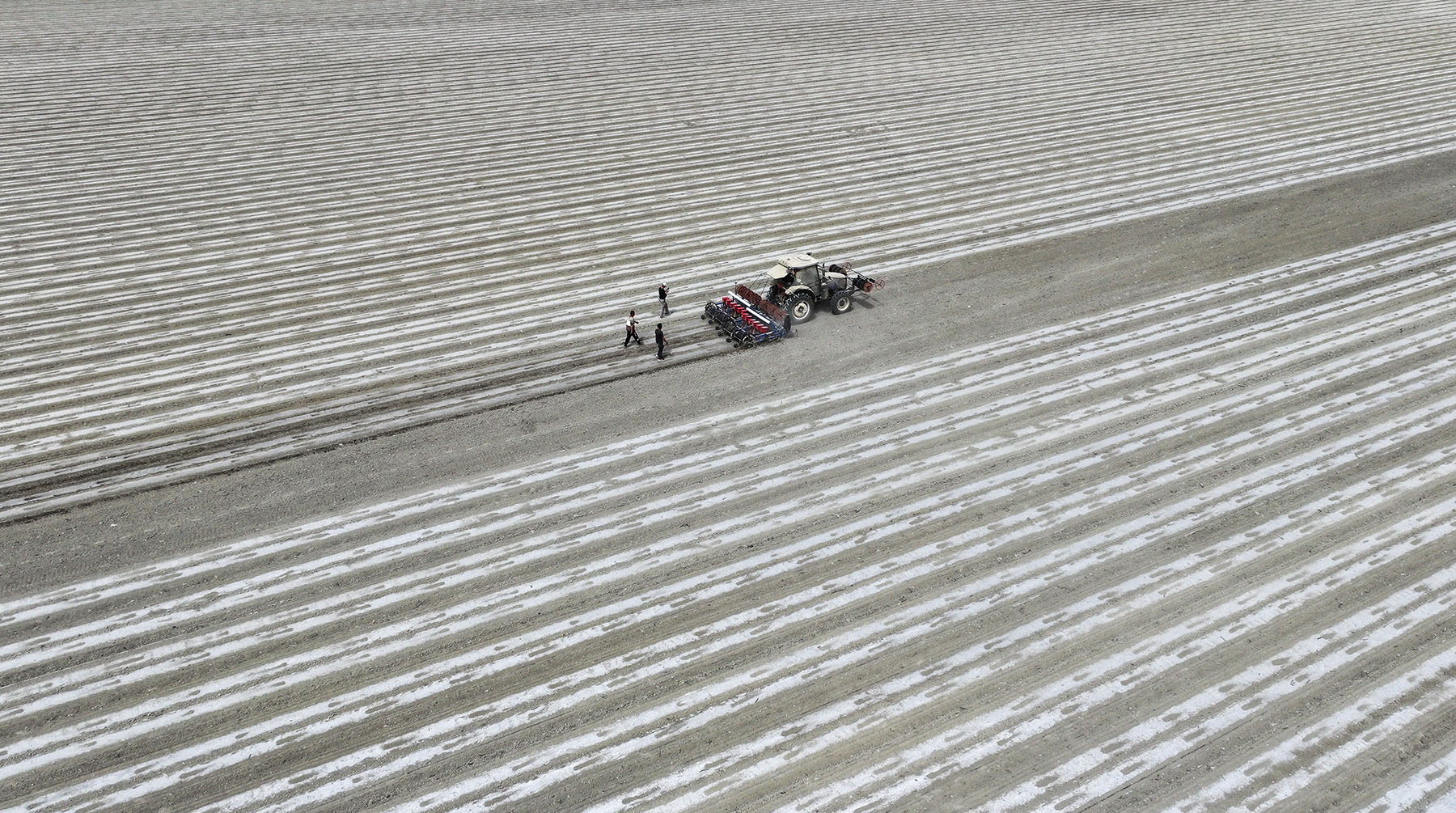
Since 2014, China has implemented a cotton target price subsidy policy in Xinjiang, which helps ensure stable incomes for growers even when cotton prices fluctuate. And as cotton yields have steadily increased in recent years, so have farmers' incomes, said Li.
When he started planting cotton in 2012, the yield was only about 300 kilograms per mu (0.067 hectare), he said. Last year, it reached around 450 to 500 kg per mu.
Meanwhile, with greater mechanization and the adoption of smart agricultural technologies, labor needs have been greatly reduced and the production cost has significantly dropped, he said.
Li started to use large-scale agricultural machinery in 2018, and mechanization had been fully adopted by cotton farmers around Xinjiang by about 2020, he said.
"With no exception, all farmers in Xinjiang now use autonomous agricultural machineries equipped with the Beidou satellite system to plant and harvest cotton. In fact, automated management covers the entire cotton growing cycle: from sowing and seedling monitoring to irrigation and plant protection," Li said.
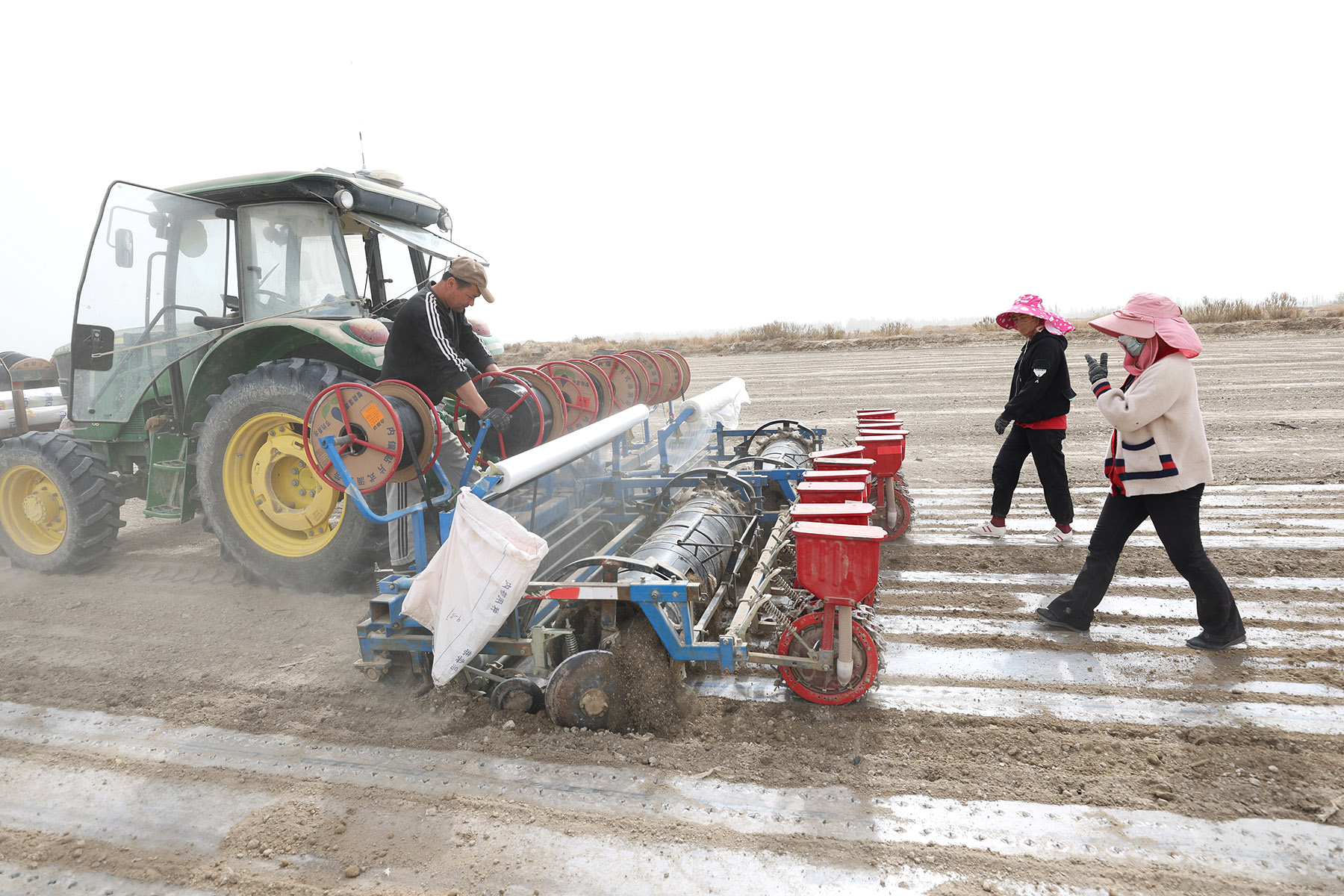
Getting stronger
Xinjiang produced about 5.69 million metric tons of cotton in 2024, representing 92.3 percent of the country's total output and securing its leading position as China's largest cotton producer for the 32nd year in a row, according to a white paper released on Friday by the State Council Information Office.
The mechanization rate in plowing, planting and harvesting has reached 97 percent, said the document titled "CPC Guidelines for Governing Xinjiang in the New Era: Practice and Achievements".
Xinjiang's cotton-growing area is projected to increase slightly from the 2.45 million hectares recorded last year, according to the regional government, reflecting the strong commitment of local farmers to the crop.
But since 2021, some Western countries, especially the US, have been smearing Xinjiang's cotton industry with baseless claims on matters such as "forced labor". The US has even tried to crack down on businesses that source cotton products from Xinjiang by imposing a series of sanctions.
These sanctions, however, have not dampened farmers' enthusiasm for cotton, which remains profitable, Li said.
"They've targeted Xinjiang's cotton industry just because it has become too strong as its output accounts for over one-fifth of the world's total. And the funny thing is the cotton price reached a record high in 2021, when the industry was first targeted because of the global market's high demand for Xinjiang cotton.
"You can barely see people in the fields during cultivation and harvesting anymore. So where do the claims of 'forced labor' come from?" Li said.
Wang Tongren, director of the Agricultural Technology Promotion Center at the Bureau of Agriculture and Rural Affairs of Awat county, said the county will ensure Xinjiang's cotton production remains strong by securing the size of the planting area of 93,333 hectares, which is particularly important when it is being targeted by the US.
"What makes us more confident is that Xinjiang's cotton industry has achieved full self-sufficiency and control, from planting to processing through technological innovation and industrial chain upgrades, particularly breaking foreign monopolies in cotton seed varieties and key equipment such as cotton pickers," Wang said. "The industry is only getting stronger."
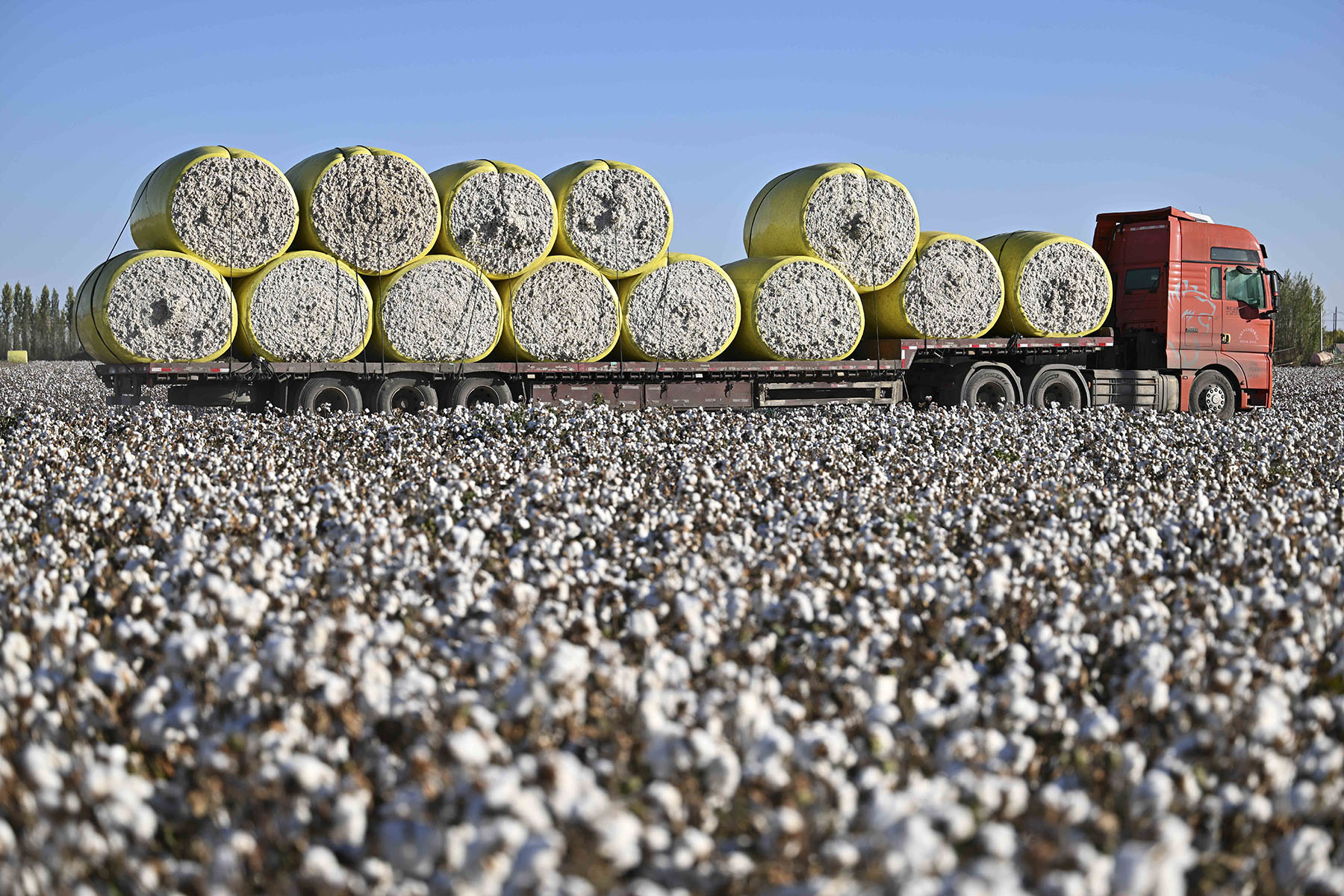
Improved varieties
At the laboratory of a seed company in Awat, Zhang Yuping was busy testing a new variety of cotton seeds developed for mechanized harvesting.
"The cotton farming mechanization process starts at the very beginning, namely with the development of seeds. Cotton grown from those seeds can reach just the right height, making it convenient for the machinery to pick," she said.
"You can see farmers use cotton seeds developed by different companies during sowing season. The competition is fierce, but it's good for Xinjiang's cotton industry."
Through the wide uptake of large machines and by leveraging cutting-edge technologies such as artificial intelligence-assisted breeding, biotechnology-based breeding and gene editing, agronomists and scientists are continuously developing and selecting more high-quality cotton seed varieties suitable for mechanical harvesting, Zhang said.
She added that the challenges posed by traditional cotton varieties in mechanical harvesting include poor adaptability, fiber fragility and incompatible field management.
"We've achieved a technological breakthrough in mechanical harvesting varieties. After all, seeds are the 'microchips' of the modern agricultural industry," Zhang said.
"We've developed new varieties with compact plant structures, concentrated boll (capsule) opening and easy detachment of boll stalks, using molecular breeding and gene editing. These new varieties have significantly improved the efficiency of cotton pickers, with the one-time harvest rate surpassing 90 percent. And the new variety that I am working on can even perform better."
Luo Cheng, head of the research and development center at another seed company in Xinjiang, said the company sold more than 2,200 tons of cotton seeds domestically in 2024, all for mechanical harvesting, covering an area of 81,333.33 hectares.
The company has developed six cotton varieties, all designed for mechanical harvesting. "Our seeds are also very popular abroad. Last year, our overseas sales reached 930 tons," Luo added.
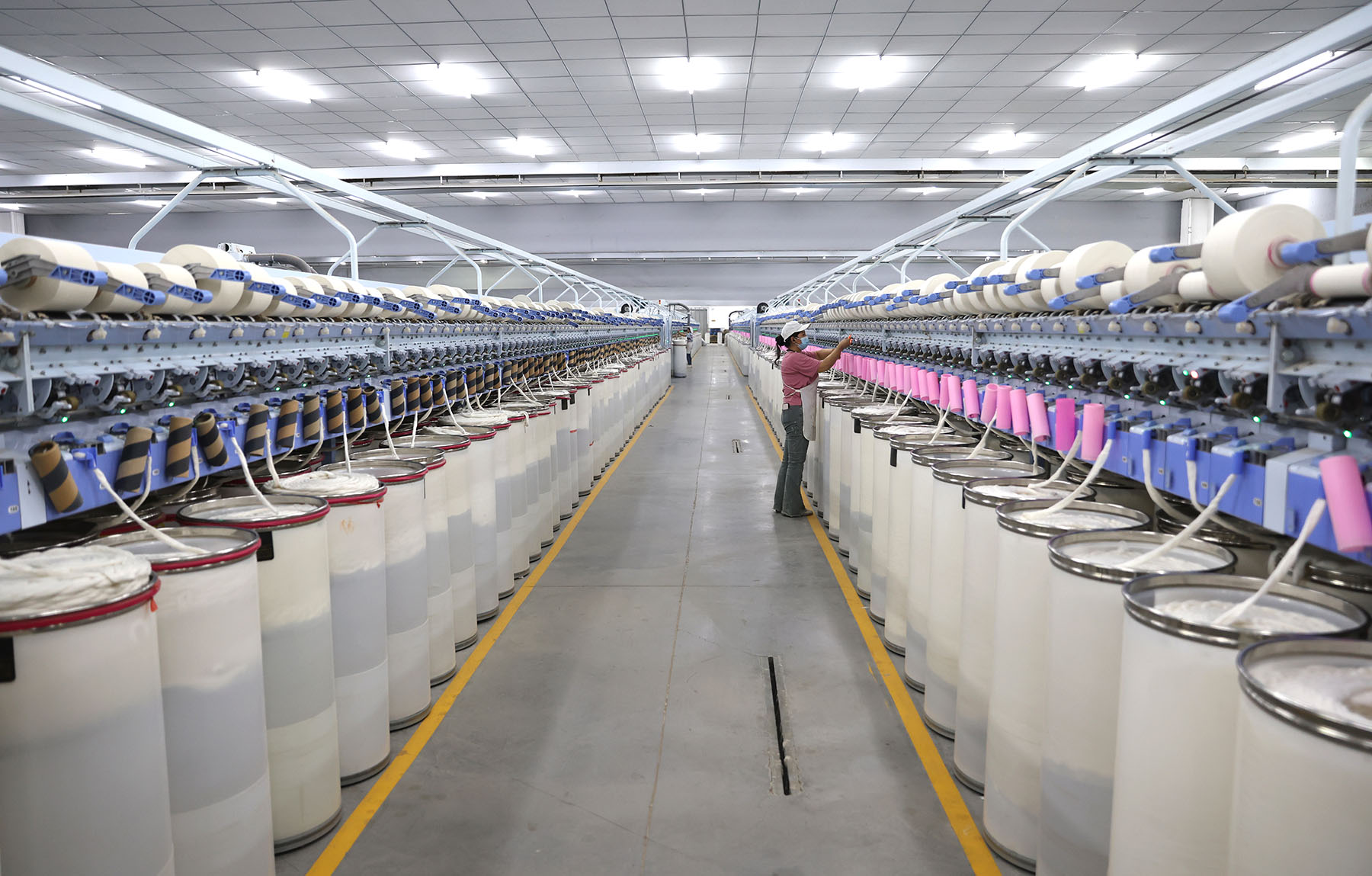
Higher yields
Tahir Peyzulla, a cotton farmer in Luntai county, Bayingolin Mongolian autonomous prefecture, said the impact of these new seeds is significant.
"Older varieties had loose plant structures and uneven maturity, making mechanical harvesting inefficient. But since we started using the new variety in 2016, the efficiency of mechanical harvesting has improved significantly," he said, adding that he expects a bumper cotton harvest of around 500 kg per mu this year.
Notably, traditional cotton seeds have not only seen technological breakthroughs, but the mechanized harvesting of long-staple cotton has also made great progress.
Long-staple cotton, highly valued for its longer fibers, is one of the world's finest cottons, with a silk-like luster and a cashmere-like feel. But mechanical harvesting of long-staple cotton used to be inefficient due to the low position of fruiting branches, necessitating manual picking.
Mechanical harvesting requires at least a 15-cm node height of the first fruiting branch above the ground. The height of previous long-staple cotton varieties was only about 9 cm, explained Tian Liwen, a researcher at the Xinjiang Academy of Agricultural Sciences.
After nearly a decade of research by the academy's institute of economic crops, the "Xin 78" variety, developed for mechanized harvesting, achieved full mechanized harvesting in 2021 with a yield of 511.5 kg per mu. It has since become the leading variety of long-staple cotton in Xinjiang.
The new variety has not only extended the node height to 17 cm, but also addressed other issues associated with old varieties — such as small cotton bolls, large leaves and poor response to defoliant sprays, that may affect output, Tian added.
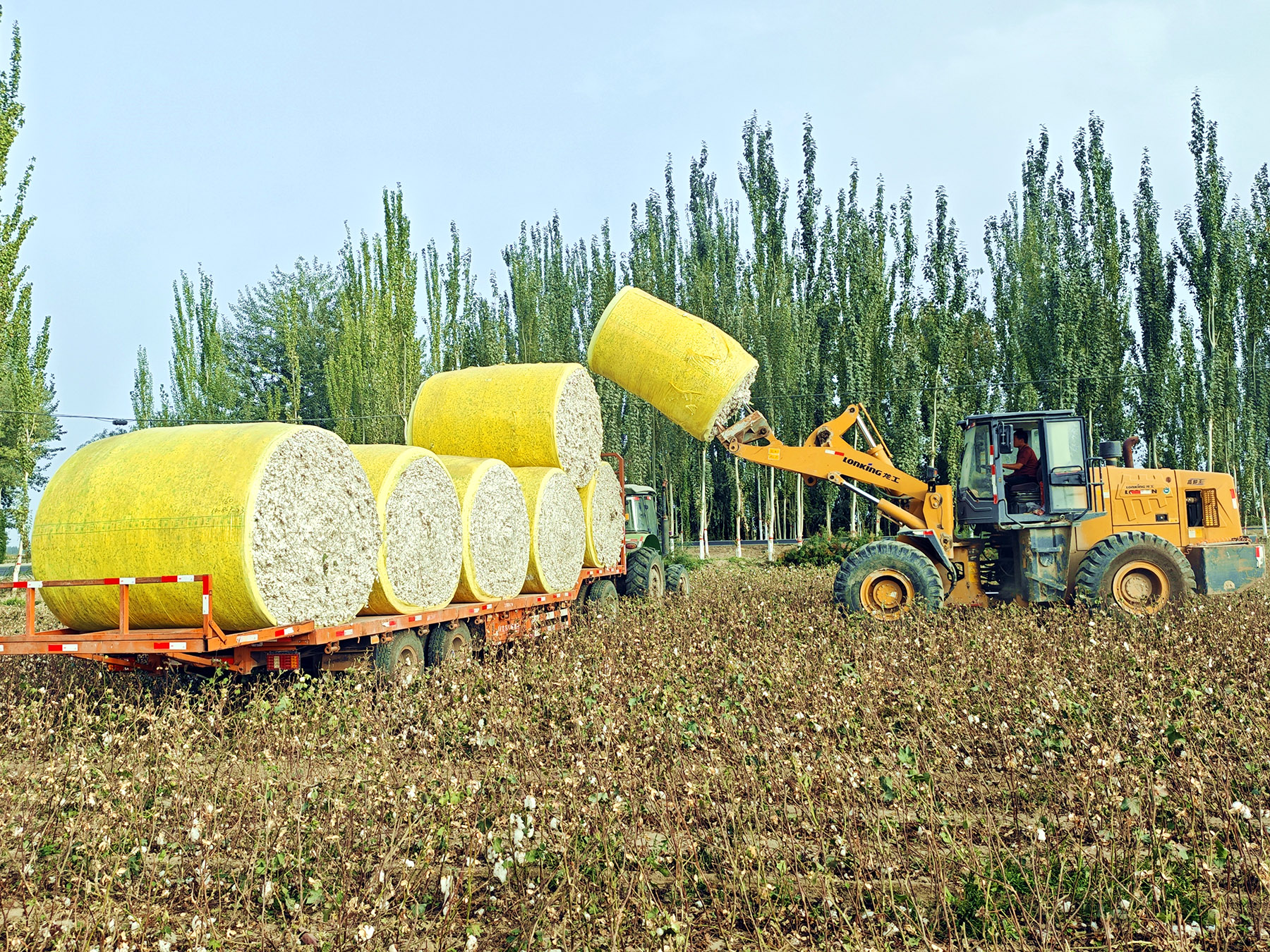
Textile hub emerges
The cotton industry has emerged as a pivotal cornerstone in elevating the livelihoods of local communities in Xinjiang. The region's cotton and textile industry generated an output value of 220 billion yuan ($30.93 billion) last year and provided employment for more than 1 million people, despite market disruptions caused by Western sanctions.
Thanks to government efforts to leverage regional advantages and extend industrial chains, Xinjiang is rapidly emerging as a textile manufacturing hub. By the end of 2024, the region was home to 3,848 registered textile and garment companies, employing 970,000 people. The number of spindles rose from 7 million in early 2014 to 29.1 million in late 2024, and the local processing rate for cotton climbed from 11 percent to 42 percent.
Gulgena Aniwar, a member of a human resources team of a company producing high-quality cotton yarn in Awat, said the company, which sources cotton locally, has expanded its manufacturing capacity by adding more production lines this year to meet surging market demand.
ALSO READ: Xinjiang backs firms' growth, counters US sanctions
"Installing more production lines means we need to recruit more workers. And for the local people, it means more job opportunities and income at their doorstep," he said. "To compete with other textile companies, we have offered better pay and welfare packages to the workers."
Gulgena laughed at the accusation of "forced labor" in Xinjiang's textile industry. "If any of that was true, then why do I have to keep posting recruitment advertisements online and on social media?"
Meanwhile, railway authorities in Xinjiang have increased transport capacity and launched dedicated cotton yarn train services this year.
According to China Railway Urumqi Group Co, to ensure efficient transportation of cotton textiles, two fixed train routes have been established in southern Xinjiang. One links Aksu and the Yangtze River Delta region on the eastern coast while the other connects Aksu and Kashgar with the Pearl River Delta region in the south.
"Through close cooperation with the Urumqi Railway Logistics Center, dedicated trains will further enhance the market competitiveness of Xinjiang's cotton textile products," said Li He, general manager of a supply chain management company.
Xinhua contributed to this story.
Contact the writer at cuijia@chinadaily.com.cn


